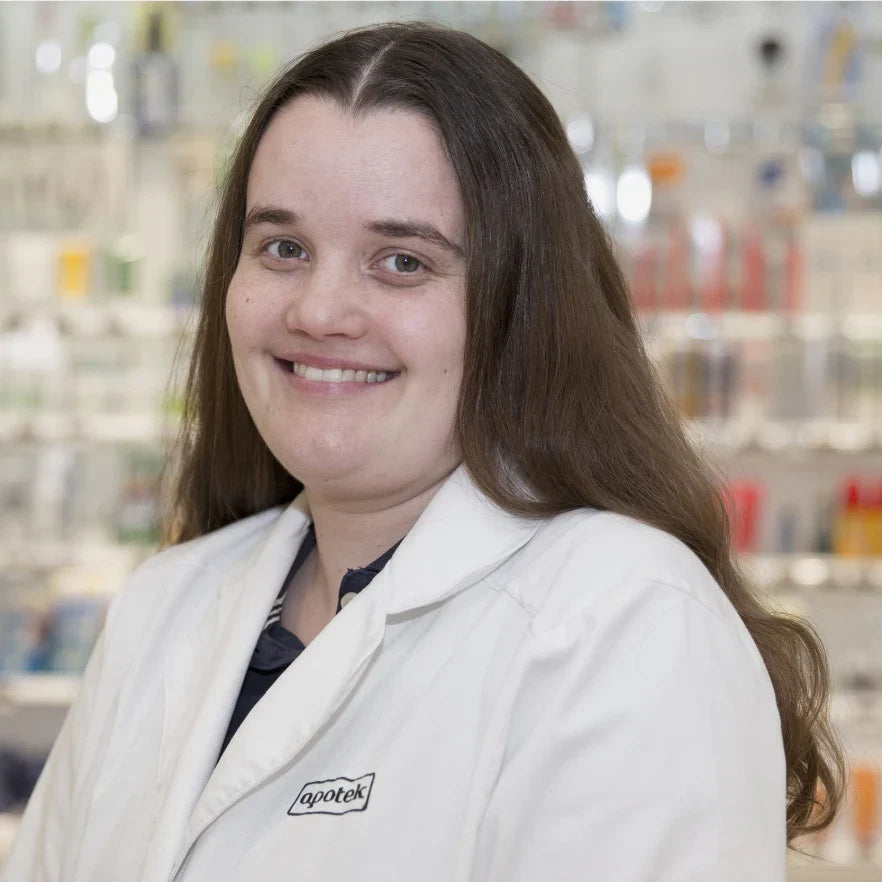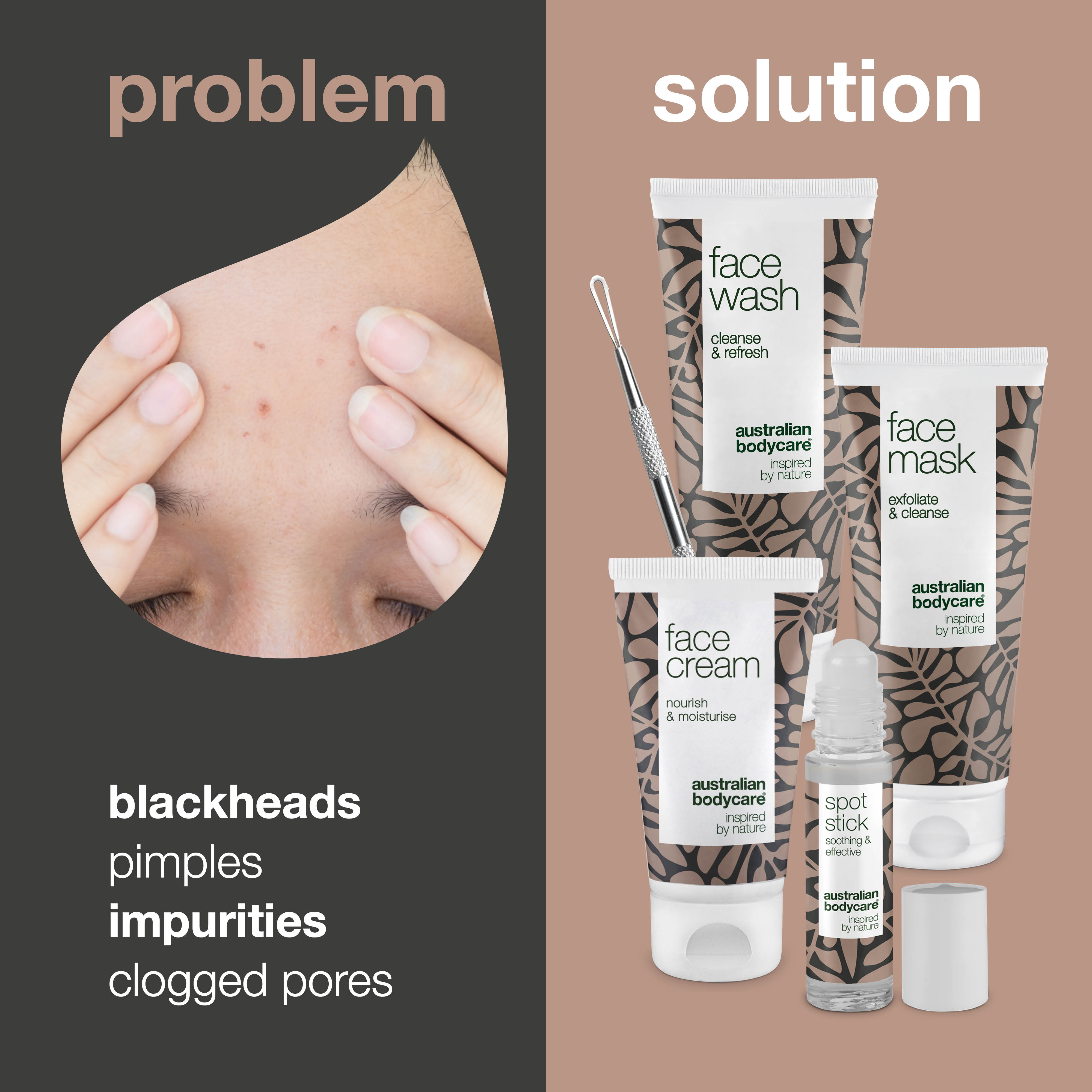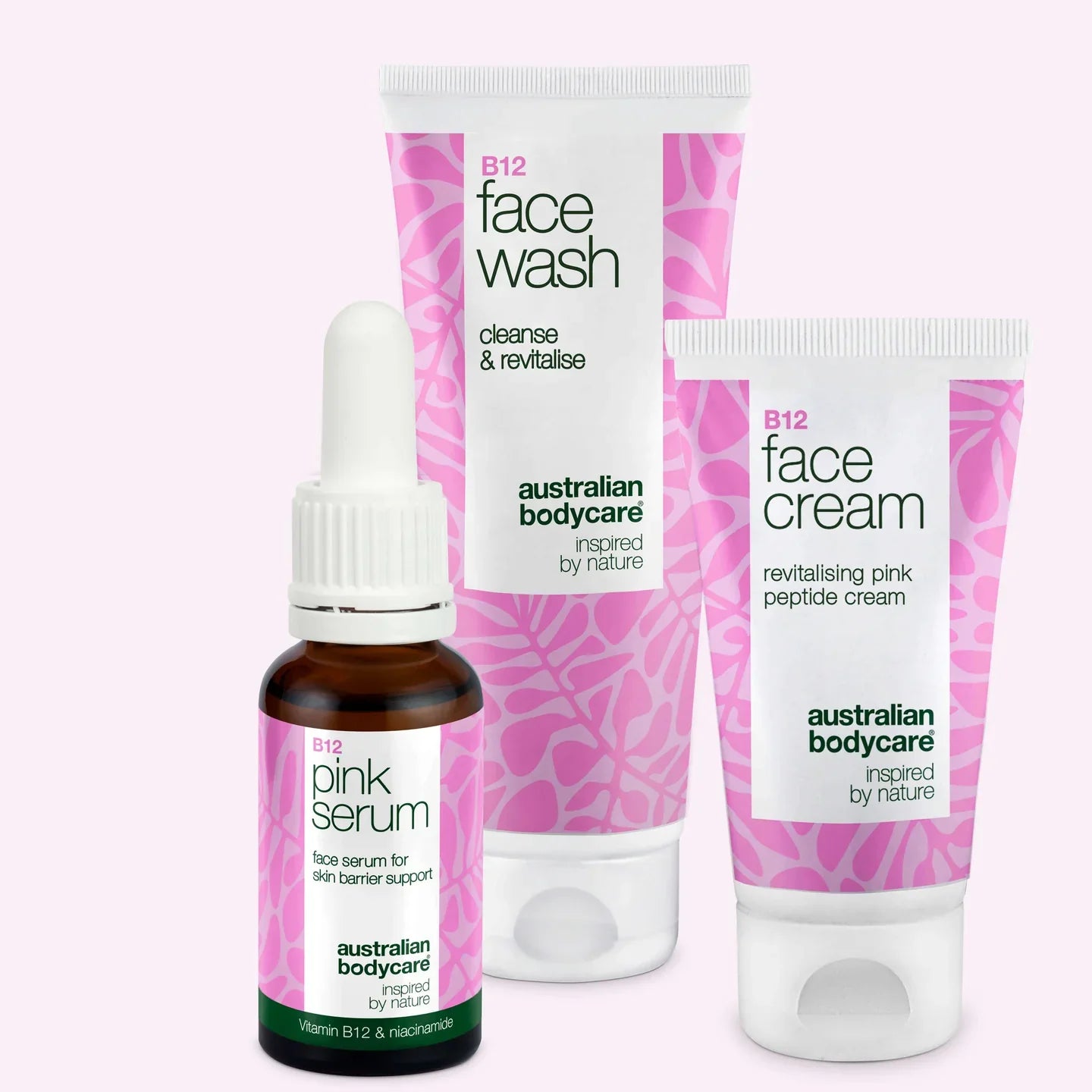How to remove blackheads
Table of contents
What are blackheads and who gets blackheads?
Blackheads are the small black or white dots that most of us have experienced, mainly on the face. Blackheads are caused by a clogged sebaceous gland, which typically occurs due to an increased sebum production - and it usually comes as a result of an increased hormone production. It is especially during puberty that there is an increase in hormone production, and therefore it is particularly young people during puberty (of both sexes) who have problems with blackheads. But all adults can get blackheads. A single one now and then or many all the time.
How can you treat blackheads?
Blackheads have nothing to do with lack of cleanliness or poor hygiene. It's just the production of hormones that plays a role in the development of blackheads. However, good cleanliness and hygiene and good skin care are important tools when trying to get rid of blackheads.
Thorough and gentle washing and cleansing of the skin is the most important weapon in the fight against blackheads. It is important to remove excess oil, dirt and any make-up from the skin every morning and every evening. In the Face series, you will find a mild and skin-friendly face wash and skin tonic that both prevent and work effectively against blackheads and impure skin.
Products against blackheads contain tea tree oil, which counteracts bacteria while caring for and protecting the skin. There is also a mild and moisturising face cream in the same range. It is very important that you remember to moisturise your skin after washing and cleansing with an anti-blackhead soap. Otherwise, you risk the skin itself starting to produce too much oil (sebum).
It's not only facial skin that needs to be cared for. For the body, you'll find body wash, body lotion and body cream in the Body product collection. Once in a while, maybe once a week, you can use an exfoliating cream for face and body. But be careful not to scrub the skin too hard and remember to use a good, nourishing day cream afterwards.
Can you push blackheads?
It is very tempting to squeeze out blackheads. The white blackheads are under the skin, so don't try to squeeze them out yourself. You should seek help from a beautician or your doctor if they are bothering you. In general, it is not a good idea to squeeze out blackheads and pimples.
As a rule, there are no bacteria in a blackhead. But if you pick at a blackhead, bacteria can get into the sebaceous gland and the blackhead can develop into a pimple. If you pick at a pimple, you risk breaking the skin and infecting the site.
However, you can gently squeeze out blackheads if they are easy to squeeze out and you are careful not to cut or scar the skin. You can use a clean piece of paper/handkerchief so that you don't transfer bacteria from your fingers into the skin. '
There is also a special blackhead remover that you can use. It's also called a comedone spear. You can buy it at the chemist's or at the chemist's.
What do blackheads look like?
Not everyone has pimples, but most people have at one time or another experienced a blackhead or two on their nose or somewhere else on their face. Blackheads are caused entirely by a clogged sebaceous gland, which is why they are most common where we have the most sebaceous glands.
We have sebaceous glands all over our body, apart from the palms of our hands and the soles of our feet, but there are particularly many on our face, back and chest. On the face, they are most common on the forehead, nose, sides of the nose and chin.
But you can also have blackheads on the rest of your face and all over your body.
Whiteheads vs blackheads
Blackheads are also called comedones. There are two different types of blackheads: blackheads and whiteheads.
Blackheads are also called open blackheads. They appear around the face and body as small black dots, often in clusters. They are at skin level and therefore cannot be felt, only seen.
Whiteheads are also called milia. They can be difficult to see because of their white colour, but you can usually feel them as a small bump or a small hard bump on the skin. They are often found under the eyes, on the forehead and on the cheeks.
How can you prevent blackheads?
Blackheads can be difficult to avoid completely as they are a hormonal skin condition. The best thing you can do to prevent blackheads is to clean and care for your skin thoroughly. Make sure you get into a good routine of washing and cleansing your skin thoroughly, but gently, morning and evening. Remember to use a good blackhead cream to get rid of blackheads.
When you cleanse your skin, you remove excess oil from your skin. Therefore, it is important that you also remember to moisturise your skin with face cream and body lotion.
A healthy diet and a healthy lifestyle with exercise and minimal stress can have a beneficial and preventive effect on the condition of the skin, and thus also on the tendency to develop blackheads. Light and air to the skin is also good.
Why do you get blackheads?
Both white and blackheads are caused when sebum and dead skin cells build up in a sebaceous gland and clog it. If some of the clogged sebum comes to the surface of the skin, it comes into contact with oxygen, which is what gives black blackheads their black colour.
If, on the other hand, the clogged sebum gets trapped under the skin's surface and cannot escape, a small white, hard bump forms and a white blackhead is formed.
Increased sebum production is typically caused by an overproduction of hormones due to a hormonal imbalance. This happens during puberty, but can also occur at other times, for example when stopping the contraceptive pill, during pregnancy or in relation to stress (in both sexes). So blackheads are a hormonal skin condition.
However, the tendency to develop blackheads can also be hereditary, and stress, among other things, also affects our hormone production and thus our skin condition.
Also read: What are pimples?





